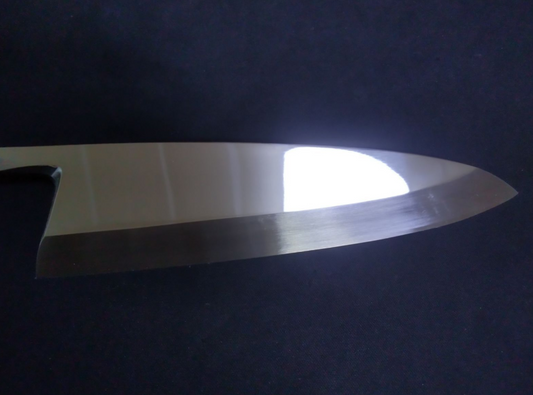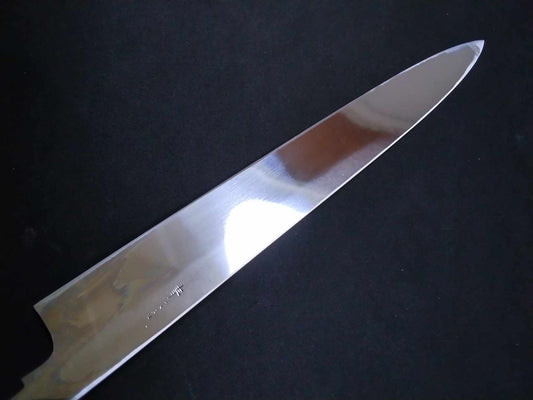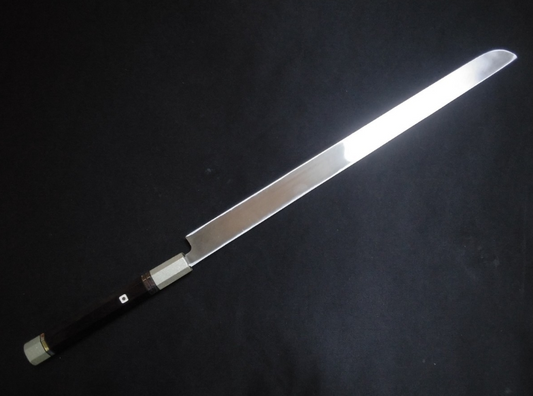
Blue Steel #2 (Honyaki-Mizuyaki)
-
Forged by fire and water—this is the ultimate edge.
From the heart of Sakai, Blue Steel #2 is hardened through the rare and unforgiving mizuyaki water-quenching process—where glowing steel meets icy water in a single, decisive instant.
The result? A Honyaki knife with enduring sharpness and a cutting feel so smooth, it’s as if the ingredients part on their own. Each slice is effortless, each surface pristine—preserving flavor, texture, and the truth of your craft.
This is more than a blade. It’s the meeting point of steel, water, and mastery—crafted for chefs who demand nothing less than perfection.
-
Blue Steel #2 (Honyaki-Mizuyaki) Japanese Knife Collection
-
Blue Steel #2 (Honyaki-Mizuyaki) Deba 180mm -Mirror Polished(one side)
Regular price $880.00 CADRegular priceUnit price / per$0.00 CADSale price $880.00 CADSold out -
Blue Steel #2 (Honyaki-Mizuyaki) Yanagiba 270mm -Mirror Polished(both sides)
Regular price $1,300.00 CADRegular priceUnit price / per$380.00 CADSale price $1,300.00 CADSold out -
Blue Steel #2 (Honyaki-Mizuyaki) Yanagiba (Sakimaru) 360mm -Mirror Polished(one side)
Regular price $1,590.00 CADRegular priceUnit price / per
Traditional craftsmen working on this collection

Yuzan
Legendary Traditional Craftsman of Japanese Knife: The Father of Traditional Craftsman Shogo Yamastuka
- Yuzan is the father of traditional craftsman Shogo Yamatsuka.
- Yuzan was a craftsman who exclusively worked on Mizuyaki among Honyaki. These Japanese knives are extremely rare and hardly available on the market.
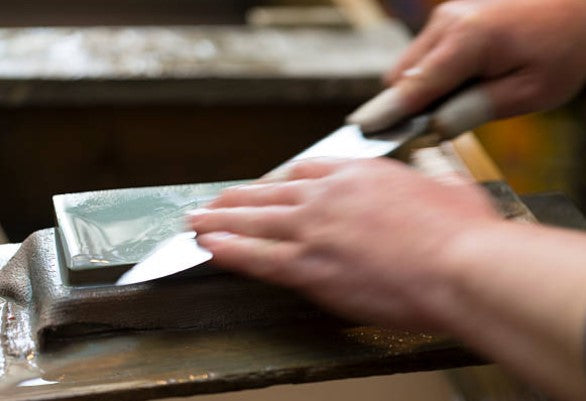
Tadayoshi Yamatsuka
Master of Japanese Knife Mirror Polishing
- Mr. Yamatsuka was recognized as a traditional craftsman in 2022.
- Excelling in blade sharpening skills, especially for thin blades
- Renowned in Sakai for his mirror polished technique on Japanese knives.
KIREAJI's Three Promises to You
-

1. Forged in the Legacy of Sakai
From Sakai City—Japan’s renowned birthplace of professional kitchen knives—each blade is crafted by master artisans with over six centuries of tradition. Perfectly balanced, enduringly sharp, and exquisitely finished, every cut carries the soul of true craftsmanship.
-

2. Thoughtful Care for Everyday Use
Every knife includes a hand-fitted magnolia saya for safe storage. Upon request, we offer a complimentary Honbazuke final hand sharpening—giving you a precise, ready-to-use edge from day one.
-

3. A Partnership for a Lifetime
A KIREAJI knife is more than a tool—it is a lifelong companion. With our bespoke paid aftercare services, we preserve its edge and beauty, ensuring it remains as precise and dependable as the day it first met your hand.
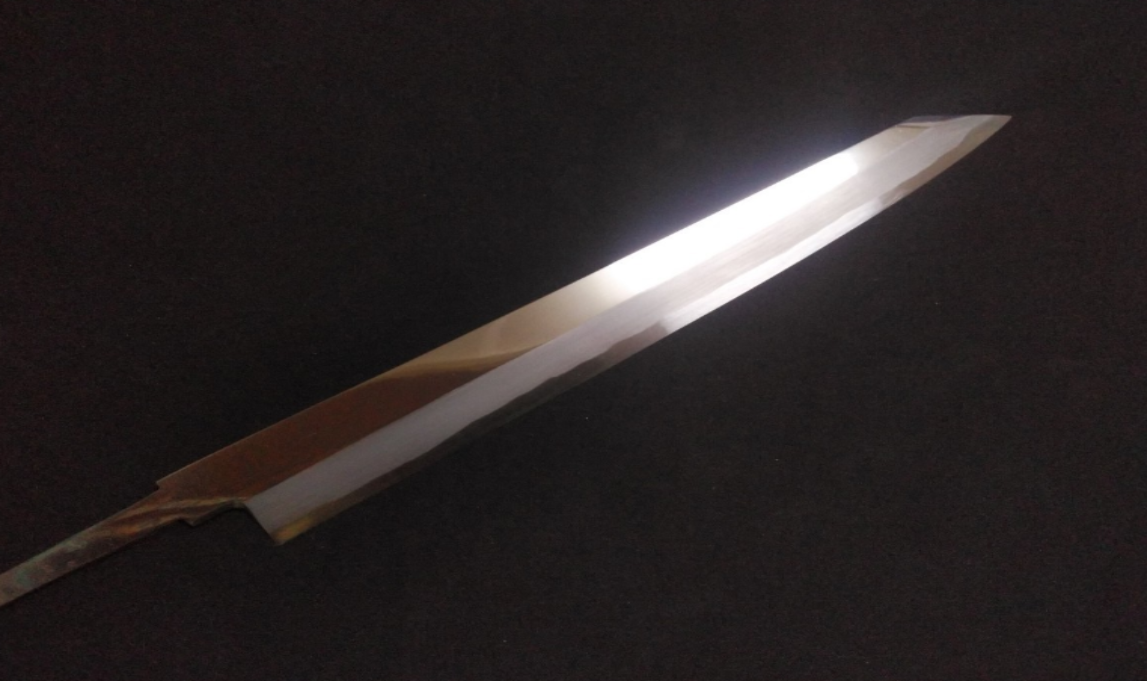
Why Many Product Photos Show Only the Blade
At KIREAJI, every knife is made to order in Sakai, Japan. Photos show the blade before the handle is attached, allowing artisans to perfect the balance and edge for your specific order. Your knife arrives fully finished — tailored just for you.

Global Delivery from Sakai
Across the world, discerning cooks seek authentic Japanese knives from Sakai — Japan’s legendary knife-making city with over 600 years of tradition.
At KIREAJI, we work alongside master artisans in Sakai to fulfill that desire, shipping genuine handcrafted knives directly from the workshop to kitchens worldwide.
Blue Steel #2 (Honyaki-Mizuyaki) — Clarity, Endurance, and High Stakes
-
This is not just a knife — it is a commitment.
Blue Steel #2 (Aogami #2) starts with the purity of White Steel and adds small amounts of chromium and tungsten to improve wear resistance and toughness, helping the edge last longer in demanding kitchens. When forged as mono-steel Honyaki and hardened by Mizuyaki (water quench), it becomes a blade that rewards precise technique with confident, lasting performance.
-

-
What Blue Steel #2 Really Is
Blue Steel #2 is a high-carbon tool steel formulated with Cr and W; this alloying nudges edge retention and durability above White Steel, though sharpening typically takes a bit more time than with lower-alloy carbon steels. It remains non-stainless, so routine care is essential.
-

Why Honyaki-Mizuyaki (Water Quenching)
Mizuyaki cools the blade very rapidly, targeting maximum hardness and edge stability—but at a significantly higher risk of cracking or warpage than oil quenching. Even skilled smiths accept higher failure rates with water quench, which is why successful pieces are limited and valued.
-
The Sharpening Experience
Compared with highly alloyed stainless steels, Blue Steel #2 responds cleanly on whetstones; you can raise a keen edge efficiently if you maintain stable angles and pressure. It isn’t as effortless to sharpen as White Steel, but it repays careful technique with durable bite. (Regular wiping and drying are non-negotiable.)
-
How It Performs
Expect precise, low-effort cuts that preserve texture in fish, vegetables, and meats. Where long prep sessions demand consistency, Blue Steel #2’s formulation and a well-executed water quench provide edge life you can rely on, without feeling harsh or brittle in daily use.
-

Who Should Choose This Knife
- Cooks who want mono-steel tradition with enduring sharpness for long services.
- Users comfortable with carbon-steel care and attentive sharpening.
- Professionals who prefer feedback that tracks technique closely.
-
Who Should Consider Other Options
- Those who want lower-maintenance knives (e.g., stainless or laminated constructions).
- For heavy, rough tasks — such as working with bones or hard materials — consider a more rugged option.
-
Blue Steel #2. Honyaki-Mizuyaki.
More than sharpness—a blade that holds its line through long hours, and answers the precision you bring to it.
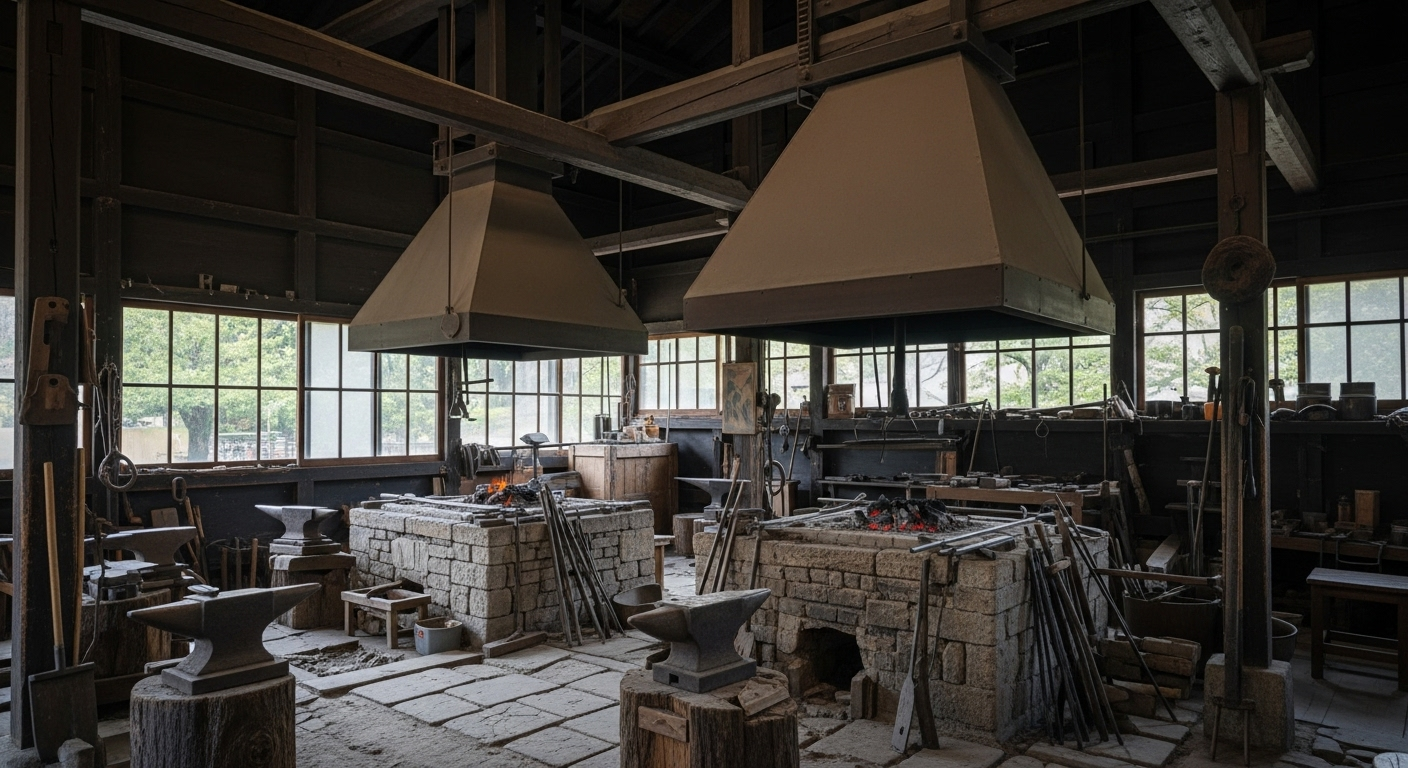
FAQ About Blue Steel #2 (Honyaki-Mizuyaki)

Q1. What is Blue Steel #2 (Honyaki – Mizuyaki)?
Blue Steel #2 is a high-carbon steel enriched with chromium and tungsten for improved durability. The mizuyaki (water quenching) heat
Blue Steel #2, or Aogami No.2, is a high-carbon steel enriched with small amounts of chromium and tungsten, which enhance durability and edge retention. When hardened through the traditional mizuyaki (water-quenching) method, it reaches extreme hardness and delivers a razor-sharp edge that lasts exceptionally long. These knives are true Honyaki, forged from a single piece of steel using centuries-old Japanese techniques, representing both performance and tradition at the highest level.
treatment makes the steel extremely hard, producing an edge that is razor-sharp, long-lasting, and ideal for precision cutting.
These knives are true Honyaki — forged from a single piece of steel, following centuries-old methods.
Q2. Who are these knives best suited for?
Blue Steel #2 Honyaki knives are ideal for intermediate to advanced users who prioritize both performance and tradition. They require careful handling and maintenance, but in return they deliver unmatched sharpness, stability, and control. They are particularly suited for professional chefs, dedicated enthusiasts, and collectors who see their knife as an extension of their craft.
Q3. What are the benefits?
Blue Steel #2 offers a remarkable balance of sharpness, edge retention, and toughness. Its alloying elements make it slightly less prone to chipping than White Steel, while still providing incredible sharpness. The steel excels in precision work such as sashimi, garnishing, and fine preparation, while also representing a living tradition of Japanese blacksmithing.
Q4. Is it easy to sharpen?
No—and that is part of its character. Blue Steel #2 is extremely hard, meaning sharpening takes time, skill, and the right whetstones. Incorrect angles or too much pressure can cause chips. However, for those who enjoy the craft of sharpening, it provides clear feedback and rewards patience with a stunning edge and a sense of mastery.
Q5. Is it prone to rust?
Yes. Despite containing alloying elements like chromium, Blue Steel #2 remains a carbon steel at its core and will react to moisture. To protect the blade, wash and dry it immediately after use, apply a thin coat of protective oil such as camellia oil, and store it in a dry environment. With proper care, the knife will not only last for decades but also develop a beautiful patina.
Q6. How is Blue Steel #2 different from White Steel #2?
The main difference lies in composition and performance. White Steel #2 is pure carbon steel with virtually no alloying elements, offering extreme sharpness and ease of sharpening but also higher fragility. Blue Steel #2, by contrast, contains added elements like chromium and tungsten, making it tougher, more resistant to wear, and slightly less prone to chipping. While White Steel offers ultimate purity and responsiveness, Blue Steel provides a balance of sharpness and durability, making it more forgiving for demanding professional use.

The Current State of Honyaki Knives
Honyaki knives, forged one by one by master blacksmiths, are among the most prized and expensive Japanese blades. As global interest in fine cooking grows, these knives are drawing increasing attention from enthusiasts seeking authentic Japanese cuisine and precision in every cut.
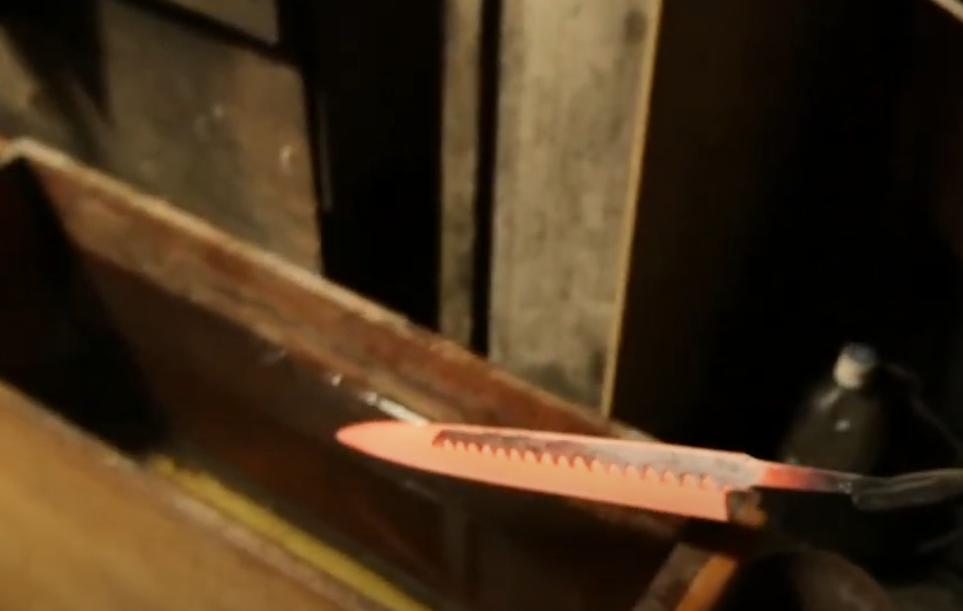
Mizuyaki vs Aburayaki
At the core of every Honyaki knife is a choice: Mizuyaki or Aburayaki. These two methods shape the blade’s character, performance, and beauty in distinct ways. Explore the world of true craftsmanship and see what sets them apart.

Japanese Knife Materials
The steel behind a Japanese knife defines its sharpness, durability, and care. From traditional carbon steels like White #2 and Blue #2 to modern innovations such as Ginsan and ZDP189, each material offers its own balance of performance and maintenance. This guide explores how these choices shape the knives we use today.
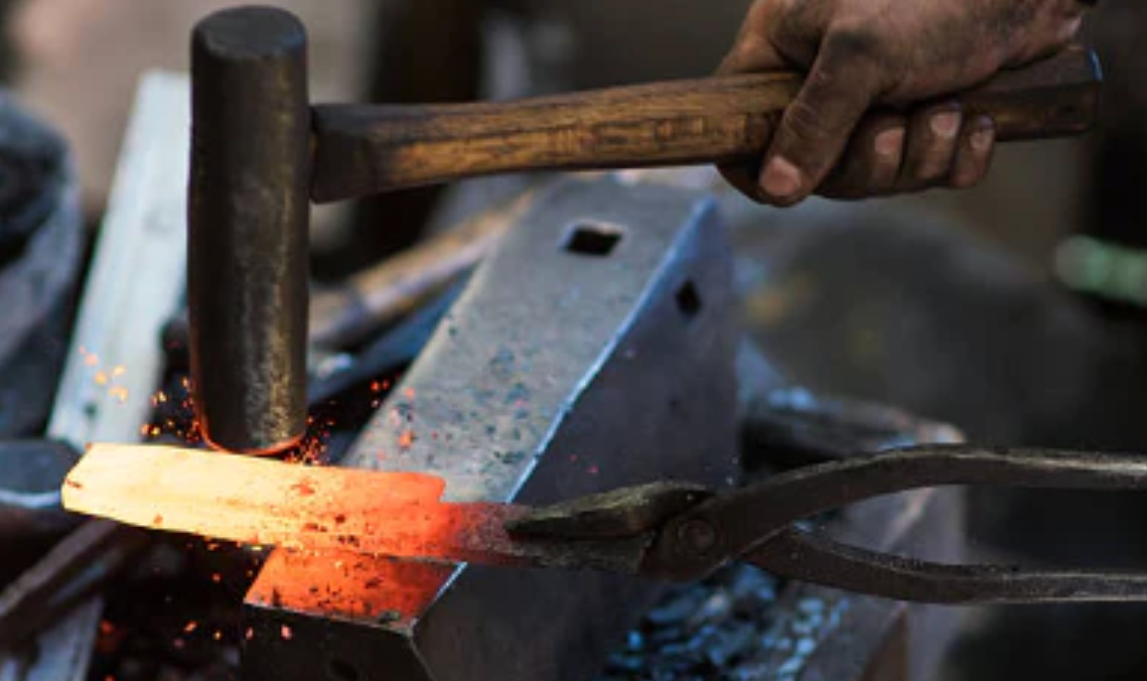
The Soul of Craftsmanship
-
Forged by Fire and Water — The True Value of Blue Steel #2 (Honyaki Mizuyaki)
In all my years of working with blades, no knife commands as much trust—and respect—as a Blue Steel #2 quenched in water.
-
Mizuyaki is a traditional heat-treatment where steel is hardened in an instant by water. The moment the glowing blade touches the surface, there’s a subtle tension—a sound only a seasoned craftsman hears. That is the very instant the steel is reborn as a knife.
-
Blue Steel #2 offers greater toughness and wear resistance than White Steel. Its edge is not only razor-sharp—it stays sharp. In the hands of a professional, it becomes a surgical instrument of precision. As a sashimi knife, its edge glides effortlessly through raw fish, preserving every delicate fiber, delivering slices of unmatched clarity and beauty.
-
But let me be clear—it is not an easy knife. Sharpening requires perfect angles, steady pressure, and flowing water. One mistake, and the edge may chip—or worse. Yet this challenge is what creates a dialogue between knife and user.
-
This blade is more than a tool—it is a mirror of your skill. On days when your cuts falter, the knife tells you: “You rushed.” “You weren’t precise enough.” It holds you accountable—and pushes you to improve.
-
To wield a Blue Steel #2 Mizuyaki is to accept a serious responsibility. But in return, it elevates cooking from routine work into an act of true craftsmanship.
A single knife can change a life
-
Forged entirely by hand in Sakai, Japan, this blade carries the legacy of traditional Japanese sword-making, elevated by generations of craftsmanship, discipline, and pride.
With its unmatched sharpness, breathtaking beauty, and the spirit of absolute dedication, the Honyaki is more than a tool — it is the soul of the chef, a lifelong partner in the pursuit of mastery, trusted by professionals around the world. -


